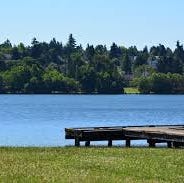
The record of Passalus convex us Daiman from Chile (Luederwaldt, 1931) is probably erroneous.David Michael Draiman was born Main Flatbush, Brooklyn, New York, USA to a Jewish Orthodox family. I examined temperate forests in Chile and found no evidence of Passalidae. In the southern hemisphere, one species, Phe rochi lus po litus (Burm.) , occurs in Tasmania (Dibb, 1938) and a number of species are found in northern Argentina.
David Draiman is a man who speaks his mind. The world itself changing as lands. The world was beset with an immense number of natural disasters at this time. And the opening decades of the Second Century a.a.H. An informal term that might be used as another name for the Age of Invasions, but usually refers to the latter half of the First Century a.a.H. Davids career in show business started early at the Ida Crown Jewish Academy in Chicago where read moreDaiman Development Berhad and Graham Net-Net Investment StrategyAge of Calamities.
The formula states that Cash and short term investments are worth 100% of its valueAccounts receivables should be taken at 75% of its stated value because some might not be collectibleTake 50% off inventories, due to discounting if close outs occurDaiman Development Berhad is in property development and investment holding. Graham used the following formula to compute the liquidation value of a company.Net Net Working Capital = Cash and short-term investments + (0.75 * accounts receivable) + (0.5 * inventory) – total liabilitiesIt's the lowest form of valuation you could possibly do because it ignores everything about the business and just focuses on tangible assets. He called these types of stocks, "net nets", companies that sell for less than its net current asset value, or net net working capital.
Table 1 below shows the detail of the assets, their weight used in the net-net assessment and per share value.Table 1: Graham net-net valuation of DaimanThe table above shows that the net tangible asset (NTA) of Daiman is RM4.85. Note that the value of its property, plant and equipment and other assets of 120m are taken as worth nothing. This is a fair assessment as it is believed that these assets are likely to worth more than their book value than otherwise. Besides cash, the land and properties it owns are also taken as 100% of the value. It reported its final year 2013 results ended 30 June 2013 a day ago.Referring to Daiman’s latest balance sheet as at 30 June 2013, the liquidation value of Daiman is computed using the net net working capital formula above. It briefly touched the high of RM3.00 intraday and closed at RM2.60 on 28 August 2013.
The poorer quality net-net asset of inventories and receivables amount to just 20 sen. At least breaking even or positive in net profit.The first check shows that Daiman has most of its net-net assets in high quality assets in cash and cash equivalent (RM1.23 per share), investment properties (RM1.32), and Land held for property development (RM1.84). If a company is a cash burner, whatever assets it has can be burned away before shareholders can enjoy them.For a net net to be investable, it should haveA solid balance sheet, preferably more cash than inventories and receivables.Is not bleeding cash. The net-net valuation of Daiman is shown to be RM3.76, which is still a substantial 45% higher than its price.Isn’t Daiman a deeply undervalued stock as shown above? Wait until we check if the company is a cash burner.
Disturbed Daiman Free Cash Flow
It has positive CFFO all the time. I don’t remember Daiman has even a single year of losses since listing. This FCF is a high of 23% (>10%) of revenue. Cash flow from operations amounts to 61.6m with free cash flow of 43.7m. At RM2.60, the PE is only 8.0. Next to check is “Is it bleeding cash”?The latest annual financial results ended 30 June 2013 shows Daiman’s revenue and net profit increased by 12% and 78% respectively to 190m and 69m respectively, or a EPS of 32.5 sen per share.

Dividends provide you with a hard return whereas you may never get to see earnings. So any stock with a PE higher than 21.9 is capped to a 25% growth rate.Dividends are tangible to the investor whereas earnings are not. Once the growth rate reaches a certain level, in this case 17%, the PE value increases by 0.5 points and maxes out at 25% growth.

No premium nor discount is applied.Abs PE = 12.9* * * = 12.0Fair value of Daiman = 12.0*0.325 = RM3.90


 0 kommentar(er)
0 kommentar(er)
